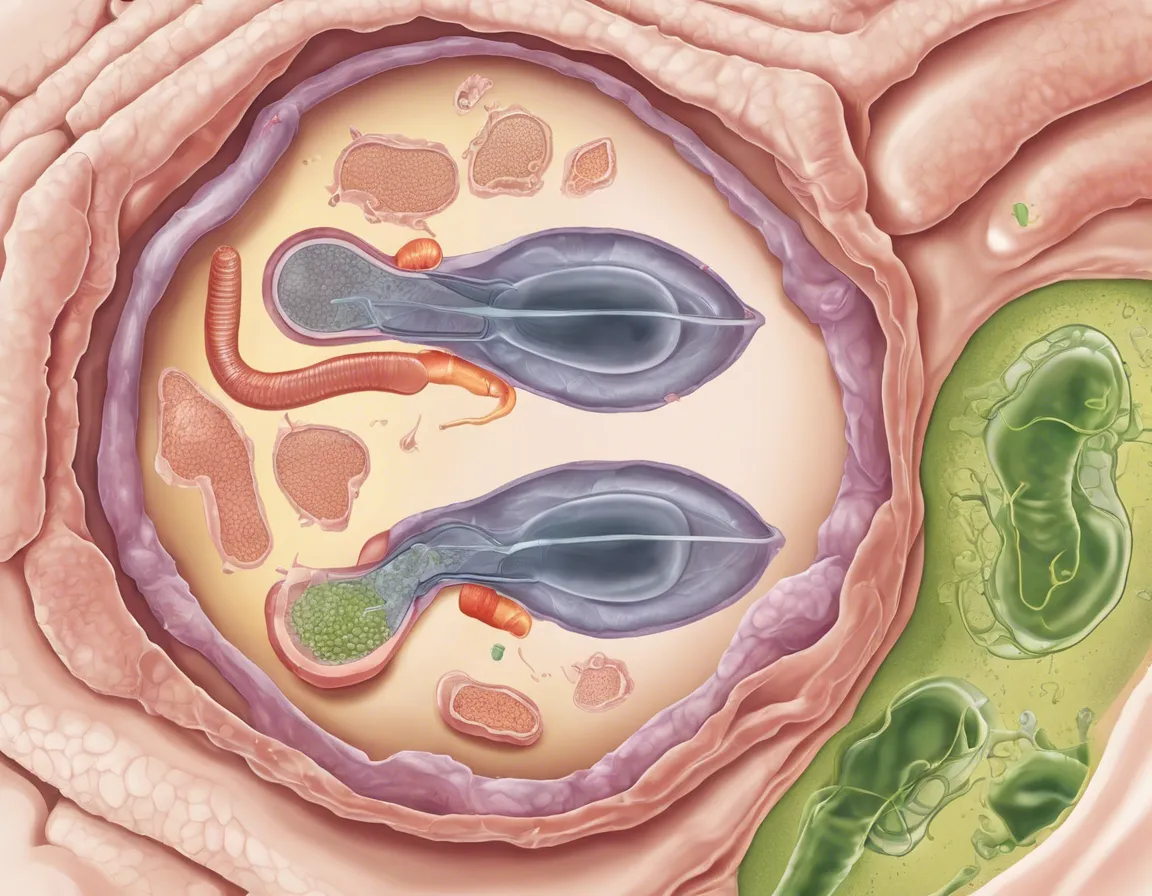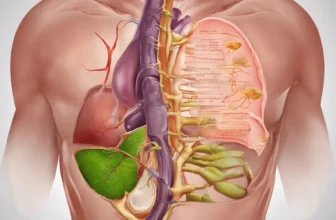
Curious about your gallbladder? Dive into these 15 must-know facts to understand its role in your health and how to keep it in top shape!
What is the Gallbladder?

The gallbladder is a small organ located under the liver on the right side of your abdomen. It stores bile, a digestive fluid produced by the liver, which helps break down fats in the food you eat.
When you eat a meal containing fat, the gallbladder releases bile into the small intestine through bile ducts. This process aids in the digestion and absorption of fats, making it easier for your body to get the nutrients it needs.
Sometimes, the bile stored in the gallbladder can harden into pieces called gallstones. These can block the flow of bile and cause pain or infections. It’s important to keep an eye on your diet and stay hydrated to help prevent gallstones.
Role in Digestion

The gallbladder stores bile produced by the liver. When you eat fatty foods, it releases bile into the small intestine. This helps break down the fats, making them easier for your body to absorb.
Besides breaking down fats, bile also helps in the absorption of fat-soluble vitamins like A, D, E, and K. Without enough bile, your body would struggle to get these essential nutrients from your diet.
Sometimes, the gallbladder can develop stones that block the flow of bile. This can cause pain and digestive issues. Maintaining a healthy diet can help reduce the risk of gallstones and keep your digestion smooth.
Bile Storage

Bile is a digestive fluid made by the liver. It’s stored in the gallbladder until needed. Bile helps break down fats into fatty acids, making it easier for your body to absorb them.
The gallbladder is a small, pear-shaped organ located beneath the liver. When you eat, especially fatty foods, the gallbladder releases bile into the small intestine to help with digestion.
If the bile stored in the gallbladder becomes too concentrated, it can form gallstones. These can cause pain and may need medical treatment. Maintaining a healthy diet can help prevent gallstones from forming.
Gallstones

Gallstones are small, hard deposits that form in the gallbladder. They can be as tiny as a grain of sand or as big as a golf ball. These stones can block the flow of bile and cause pain or infection.
Gallstones form when there’s too much cholesterol or bilirubin in the bile. They can also develop if the gallbladder doesn’t empty properly. People with obesity, diabetes, or certain blood disorders are more likely to get gallstones.
Symptoms of gallstones include sudden and intense pain in the upper right abdomen, nausea, and vomiting. If left untreated, gallstones can lead to serious complications like inflammation of the gallbladder or pancreas, requiring medical attention.
Symptoms of Gallbladder Issues

Gallbladder problems often cause pain in the upper right side of the abdomen. This pain can be sudden and intense, lasting from a few minutes to several hours. It might also spread to your back or right shoulder blade.
Another common symptom is nausea or vomiting, which often accompanies abdominal pain. Some people may also experience indigestion, especially after eating fatty or greasy foods. These digestive issues can be persistent and uncomfortable.
In some cases, gallbladder issues can lead to jaundice, which is a yellowing of the skin and eyes. This happens when a gallstone blocks the bile duct, causing bile to build up in the liver and enter the bloodstream.
Risk Factors

Several factors can make you more prone to gallbladder problems. These include being overweight, eating a high-fat diet, and having a family history of gallbladder disease. Women, especially those who have had multiple pregnancies, are also at higher risk.
Certain medical conditions can also raise your chances of gallbladder issues. Diabetes, liver disease, and cholesterol-lowering medications can all play a role. It’s important to maintain a healthy lifestyle to lower these risks.
Age is another key factor. People over 40 are more likely to develop gallbladder problems. Hormonal changes, particularly during menopause, can also contribute to the likelihood of developing gallstones or other gallbladder diseases.
Diet and Gallbladder Health

Your gallbladder helps digest fats, so eating a balanced diet with healthy fats can support its function. Include foods like olive oil, fish, and nuts. Avoid high-fat and fried foods, which can strain your gallbladder.
Fiber-rich foods like fruits, vegetables, and whole grains can help keep your gallbladder healthy. Fiber aids digestion and keeps bile moving smoothly. Make sure to drink plenty of water to help fiber do its job well.
Consuming too much sugar and refined carbs can increase your risk of gallstones. Opt for whole foods and limit sugary snacks. Staying at a healthy weight through diet and exercise also keeps your gallbladder in good shape.
Gallbladder Removal

Gallbladder removal, or cholecystectomy, is often necessary when gallstones cause pain or infection. These small, hard deposits can block the flow of bile, leading to severe discomfort and complications if left untreated.
The surgery to remove the gallbladder is typically done using minimally invasive techniques, which means smaller incisions and a quicker recovery time. Most people can go home the same day and resume normal activities within a week.
After gallbladder removal, some people may experience digestive changes. It’s important to follow your doctor’s advice on diet and activity to help your body adjust and ensure a smooth recovery.
Life Without a Gallbladder

After gallbladder removal, your liver takes over bile production, which helps digest fats. Without a storage spot for bile, it drips constantly into your digestive system, which might mean adjusting your diet to avoid fatty foods.
Some people experience diarrhea after gallbladder removal, as bile can irritate the intestines when it’s not released in controlled amounts. Eating smaller, more frequent meals can help manage this issue and keep your digestive system balanced.
It’s important to stay hydrated and maintain a diet rich in fiber to support digestion without a gallbladder. Foods like fruits, vegetables, and whole grains can help keep your digestive system running smoothly and prevent discomfort.
Preventing Gallbladder Problems

Eating a balanced diet with plenty of fruits, vegetables, and whole grains can help maintain a healthy gallbladder. Avoiding high-fat and high-cholesterol foods reduces the risk of gallstones and other gallbladder issues.
Regular physical activity is important for overall health and can prevent gallbladder problems. Exercise helps maintain a healthy weight, which reduces the risk of gallstones and other related issues.
Staying hydrated is crucial for gallbladder health. Drinking plenty of water helps keep bile in the gallbladder in a liquid state, which can prevent the formation of gallstones and other complications.
Gallbladder and Cholesterol

High cholesterol levels can lead to the formation of gallstones in the gallbladder, causing pain and digestive issues. It’s important to monitor your cholesterol to prevent these problems.
A diet rich in fiber and low in saturated fats can help manage cholesterol levels and support gallbladder health. Including fruits, vegetables, and whole grains in your meals can make a big difference.
Regular exercise not only helps in maintaining a healthy weight but also keeps cholesterol levels in check, reducing the risk of gallbladder issues. Aim for at least 30 minutes of activity most days of the week.
Gallbladder Inflammation

Gallbladder inflammation, also known as cholecystitis, happens when the gallbladder becomes swollen, often due to gallstones blocking the bile ducts. This blockage causes bile to build up, leading to pain and discomfort in the upper right abdomen.
One common cause of gallbladder inflammation is the presence of gallstones, which are hardened deposits of digestive fluid. These stones can block the flow of bile, causing severe pain, nausea, vomiting, and even fever if an infection develops.
Treatment for gallbladder inflammation often involves a combination of medication to manage pain, antibiotics if infection is suspected, and in some cases, surgery to remove the gallbladder. Lifestyle changes, such as a low-fat diet, can also help in managing and preventing future flare-ups.
Gallbladder Polyps

Gallbladder polyps are small growths that stick out from the lining of the gallbladder. Most of these polyps are harmless, but some can be a sign of cancer. Regular check-ups can help catch any changes early.
Some people with gallbladder polyps might not have any symptoms. Others might feel discomfort or pain in their upper abdomen. It’s important to talk to your doctor if you notice any unusual symptoms, even if they seem minor.
Treatment for gallbladder polyps depends on their size and whether they cause symptoms. Small, harmless polyps often just need regular monitoring. However, larger or symptomatic polyps might require surgical removal to prevent complications.
Seeking Medical Help

If you experience severe pain in the upper right side of your abdomen, it might be a sign to see a doctor. This pain can sometimes spread to your back or shoulder and may be accompanied by nausea or vomiting.
You should also seek medical help if you notice yellowing of your skin or eyes, known as jaundice. This could indicate a blockage in your bile ducts and needs prompt medical attention to prevent further complications.
Unexpected weight loss or changes in your bowel movements, like pale stools, can also be signs of gallbladder issues. It’s important to consult a healthcare provider to diagnose the cause and receive appropriate treatment.
Fun Facts

Did you know that the gallbladder is a small organ that stores bile, which helps digest fats? It’s shaped like a pear and is located under the liver. Without it, your liver would still produce bile, but it would be less efficient at breaking down fats.
Interestingly, the gallbladder can form stones, known as gallstones, which can be as small as a grain of sand or as large as a golf ball. These stones can cause pain and other issues, sometimes requiring surgery to remove the gallbladder.
Another fascinating fact is that not everyone experiences symptoms from gallstones. Many people have gallstones and never know it because they don’t cause any problems. However, if they block a bile duct, it can lead to severe pain and complications.
Conclusion
Understanding your gallbladder’s function and recognizing signs of trouble can help you maintain better health. Remember these essential facts and don’t hesitate to consult a healthcare professional if you have concerns. Keeping informed is the first step to a healthier you!






